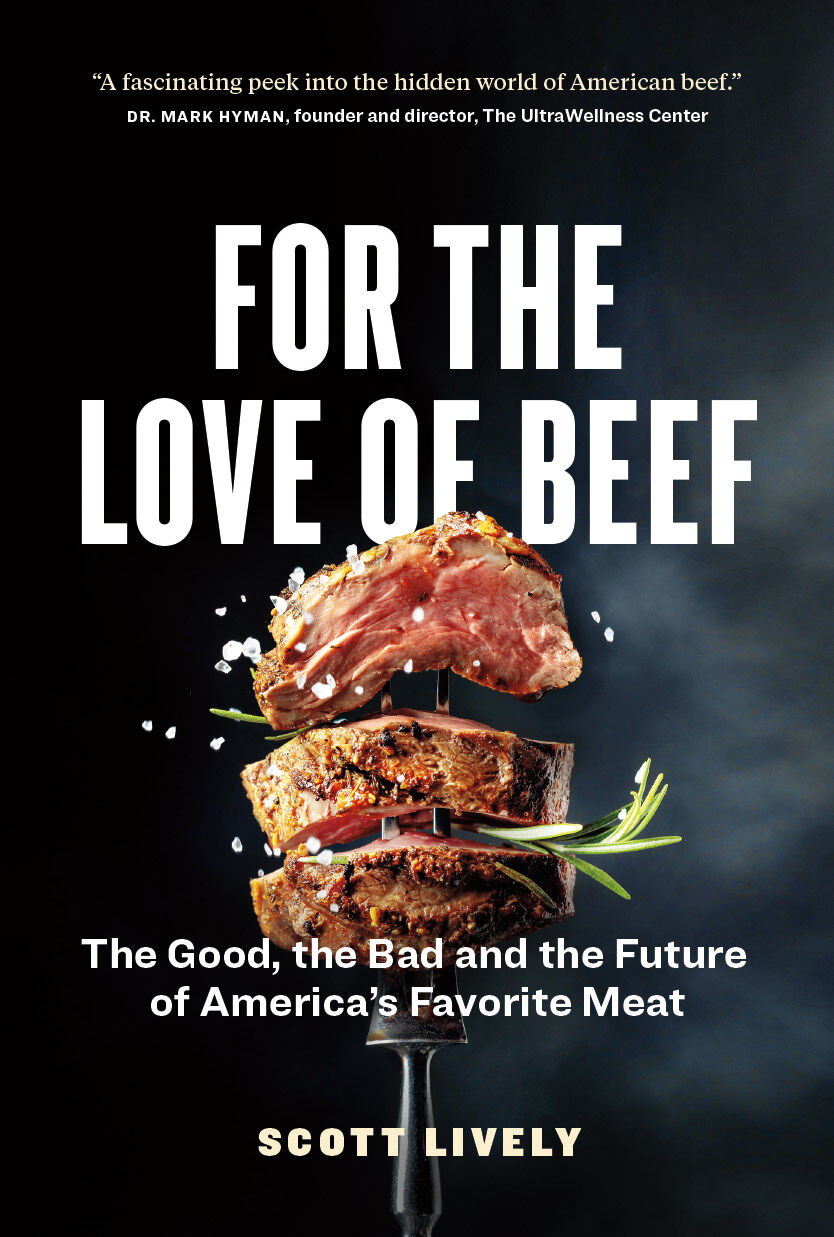Everything you wanted to know about beef from organic beef company CEO

If you graze cattle or run a cow-calf operation, you are probably used to questions from friends and family who are not involved in the cattle business. What cut of steak should I buy, and why? Why are they differently priced?
What do those USDA beef grades really mean? What is “aged” beef? What is Angus beef? Why is it important to know where your beef comes from? What’s the real difference between grass-fed and “finished” beef? What is a beef byproduct?
Now, instead of answering those questions yourself (again), you can give your friends and family the brand-new book For the Love of Beef: The Good, the Bad and the Future of America’s Favorite Meat. The author is Scott Lively, president of Raise American, a farm-to-table organic grass-fed beef operation that claims to be the largest in the nation. Lively left a career in the information technology industry to raise beef and he calls himself a “beef geek.” He also “oversees a broad portfolio of company and private labels and brands.” Lively writes not only as a beef grower, but as a steak enthusiast who regularly queries the butchers at his grocery and the waiters at his favorite steakhouses about where their meat comes from and how it is treated.
This is very much an “outward-facing” book. If you run or raise cows, you are probably familiar with some or most of the “inside secrets” Lively relates about cattle and the beef business. He writes, “I want you to know what the waiter doesn’t. I want you to know what the butcher doesn’t. I want you to know what the packers and the grocers and the government know but don’t have to tell you.”
Lively may be a beef geek, but he is not a steak snob. He explains the differences between the different cuts, and why some lower cuts are worth trying.
In one chapter, “Following the Trail of Boxed Beef,” he explains how Big Beef came about in the 1970s as many smaller processing plants were consolidated into a few larger ones. “By the end of the 1970s, the whole industry had transformed, and new nearly all of the processing is done by a few huge packing houses. What we now refer to as ‘small farmers’—they used to be just farmers—mostly got squeezed out of the picture.” It’s a story that has been told before, often with a hostile spin by opponents of Big Beef. Lively adds details that will give pause to some proponents of going back to smaller operations. In describing what happens to a cow carcass at the processing plant, Lively notes that sides of beef are cleaned in something called a Chad cabinet (named after the manufacturer), which steam-clean them, and adds, “personally, I would not eat beef that came out of a plant that did not have a Chad cabinet.”
As a grower of organic beef, Lively has high praise for the U.S. Department of Agriculture’s inspection system. Lively’s operation is part of a new sustainable pathway for beef production, one brought into being by consumers’ concern for how their food is produced and focused on taste. He is careful to stipulate, “The beef industry does a remarkable job getting beef all over the country, and it has a history of doing so safely … But it is a monolithic operation, and it might be time to consider a more diversified system.” He quotes Temple Grandin: “Big is not bad, but it is fragile.” This saying that has new relevance in light of today’s supply-chain issues.
Beef is changing, but it isn’t going anywhere. Anyone who cares about the future of beef—and Lively is convinced it has a great one—might want to share this book with their friends and family members this holiday season.
David Murray can be reached at [email protected].



